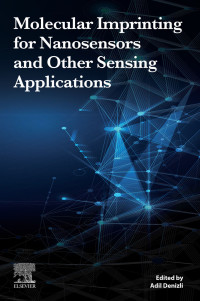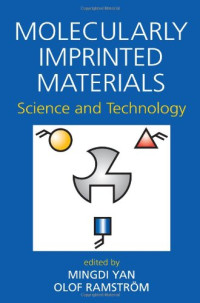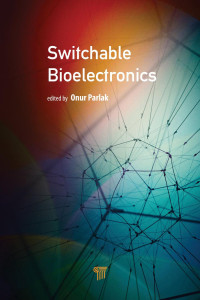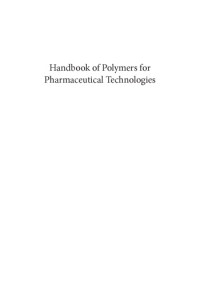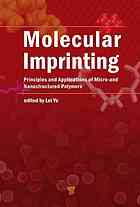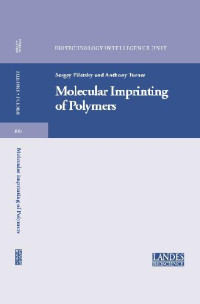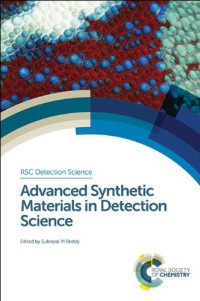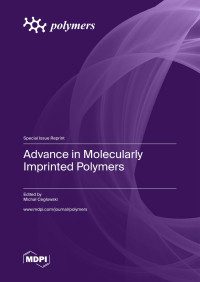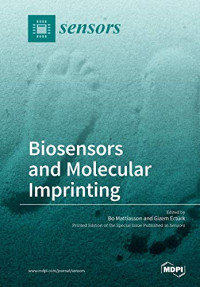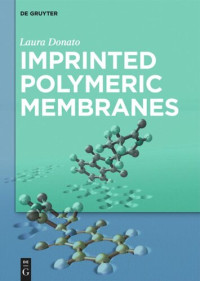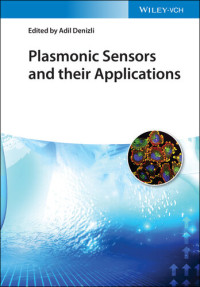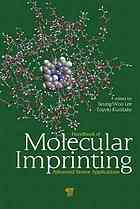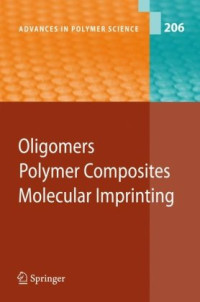
Advanced molecularly imprinting materials
Tiwari, Ashutosh, Uzun, Lokman
"Molecularly imprinted polymers (MIPs) are an important functional material because of their potential implications in diverse research fields. The materials have been developed for a range of uses including separation, environmental, biomedical and sensor applications. In this book, the chapters are clustered into two main sections: Strategies to be employed when using the affinity materials, and rational design of MIPs for advanced applications. In the first part, the book covers the recent advances in producing MIPs for sample design, preparation and characterizations. In the second part, the chapters demonstrate the importance and novelty of creation of recognition imprinted on the materials and surfaces for a range of microbial detection sensors in the biomedical, environmental and food safety fields as well as sensing human odor and virus monitoring systems. Part 1: Strategies of affinity materials Molecularly imprinted polymers MIP nanomaterials Micro- and nanotraps for solid phase extraction Carbonaceous affinity nanomaterials Fluorescent MIPs MIP-based fiber optic sensors Part 2: Rational design of MIP for advanced applications MIP-based biomedical and environmental sensors Affinity adsorbents for environmental biotechnology MIP in food safety MIP-based virus monitoring MIP-based drug delivery and controlled release Biorecognition imprints on the biosensor surfaces MIP-based sensing of volatile organic compounds in human body odour MIP-based microcantilever sensor system"--Provided by publisher.
Abstract: "Molecularly imprinted polymers (MIPs) are an important functional material because of their potential implications in diverse research fields. The materials have been developed for a range of uses including separation, environmental, biomedical and sensor applications. In this book, the chapters are clustered into two main sections: Strategies to be employed when using the affinity materials, and rational design of MIPs for advanced applications. In the first part, the book covers the recent advances in producing MIPs for sample design, preparation and characterizations. In the second part, the chapters demonstrate the importance and novelty of creation of recognition imprinted on the materials and surfaces for a range of microbial detection sensors in the biomedical, environmental and food safety fields as well as sensing human odor and virus monitoring systems. Part 1: Strategies of affinity materials Molecularly imprinted polymers MIP nanomaterials Micro- and nanotraps for solid phase extraction Carbonaceous affinity nanomaterials Fluorescent MIPs MIP-based fiber optic sensors Part 2: Rational design of MIP for advanced applications MIP-based biomedical and environmental sensors Affinity adsorbents for environmental biotechnology MIP in food safety MIP-based virus monitoring MIP-based drug delivery and controlled release Biorecognition imprints on the biosensor surfaces MIP-based sensing of volatile organic compounds in human body odour MIP-based microcantilever sensor system"--Provided by publisher.
Abstract: "Molecularly imprinted polymers (MIPs) are an important functional material because of their potential implications in diverse research fields. The materials have been developed for a range of uses including separation, environmental, biomedical and sensor applications. In this book, the chapters are clustered into two main sections: Strategies to be employed when using the affinity materials, and rational design of MIPs for advanced applications. In the first part, the book covers the recent advances in producing MIPs for sample design, preparation and characterizations. In the second part, the chapters demonstrate the importance and novelty of creation of recognition imprinted on the materials and surfaces for a range of microbial detection sensors in the biomedical, environmental and food safety fields as well as sensing human odor and virus monitoring systems. Part 1: Strategies of affinity materials Molecularly imprinted polymers MIP nanomaterials Micro- and nanotraps for solid phase extraction Carbonaceous affinity nanomaterials Fluorescent MIPs MIP-based fiber optic sensors Part 2: Rational design of MIP for advanced applications MIP-based biomedical and environmental sensors Affinity adsorbents for environmental biotechnology MIP in food safety MIP-based virus monitoring MIP-based drug delivery and controlled release Biorecognition imprints on the biosensor surfaces MIP-based sensing of volatile organic compounds in human body odour MIP-based microcantilever sensor system"--Provided by publisher.
카테고리:
년:
2017
출판사:
John Wiley & Sons
언어:
english
페이지:
709
ISBN 10:
2462482482
ISBN 13:
9782462482488
시리즈:
Advanced materials series (Scrivener Publishing)
파일:
PDF, 29.80 MB
IPFS:
,
english, 2017
 Amazon
Amazon  Barnes & Noble
Barnes & Noble  Bookshop.org
Bookshop.org  파일을 변환하실 수 있습니다
파일을 변환하실 수 있습니다  더 많은 검색 결과
더 많은 검색 결과 기타 혜택
기타 혜택 







